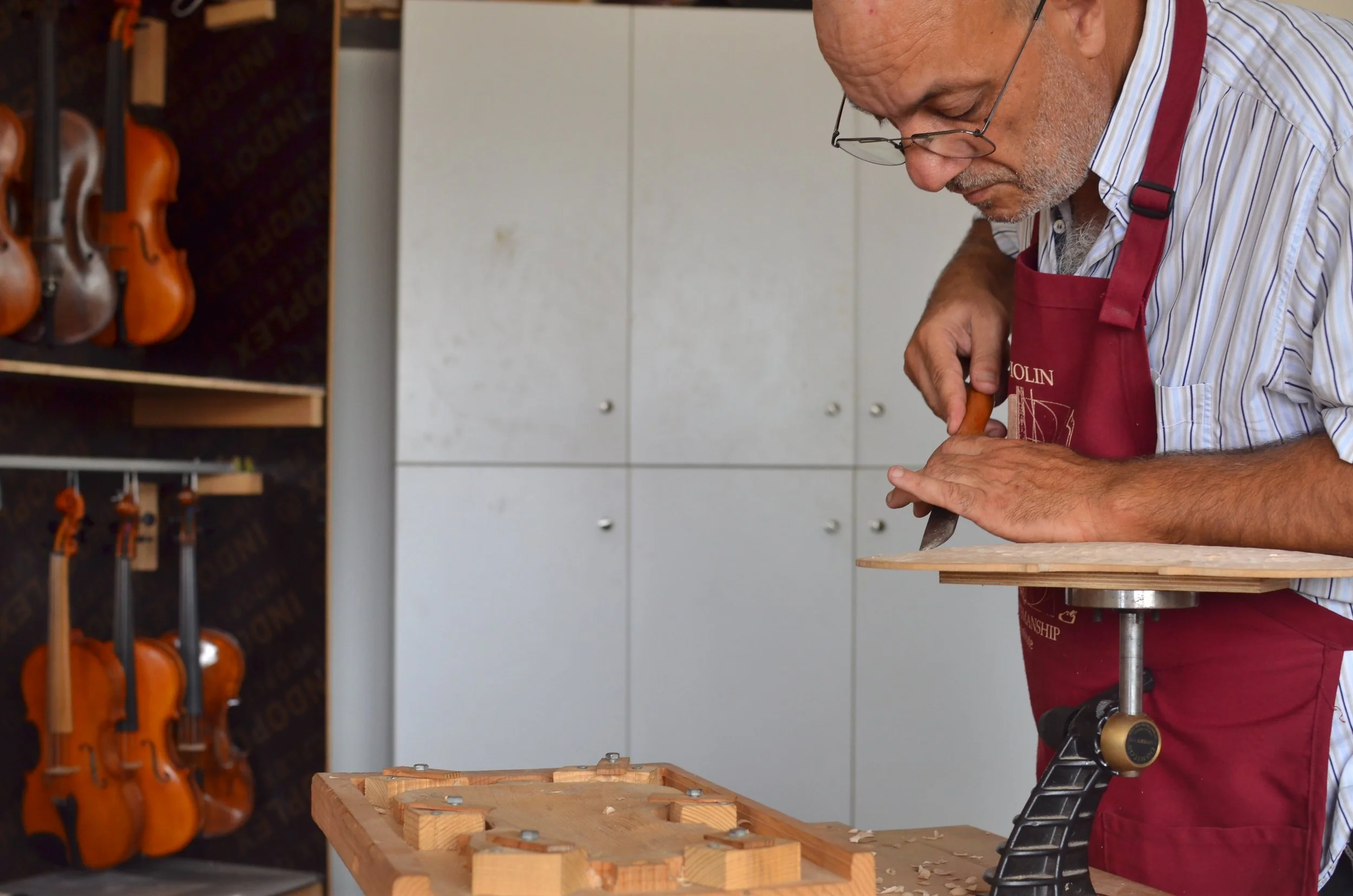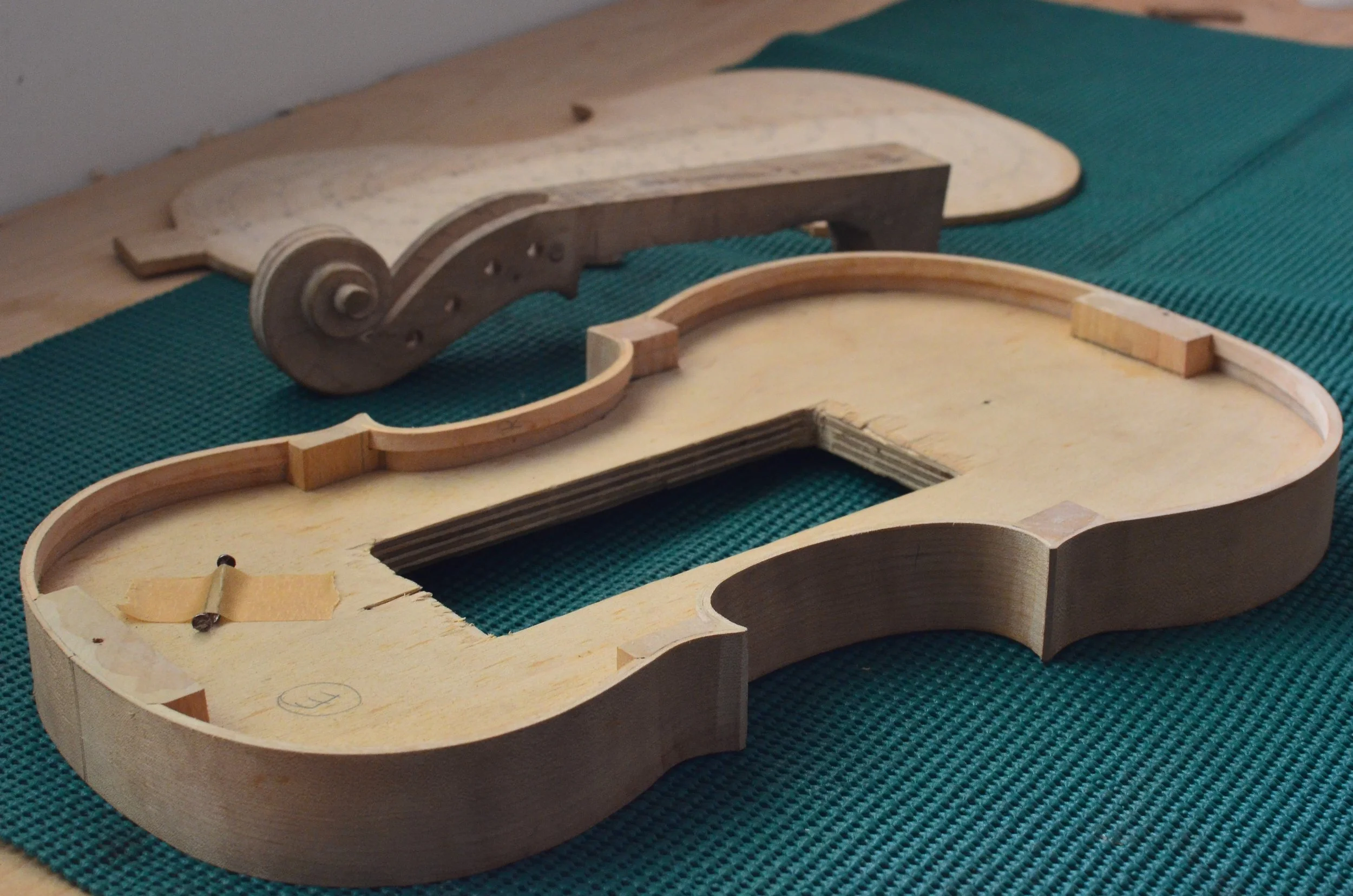About
I hand-make my violins to traditional designs. Using time-honored techniques, I transform quality wood, pigments, and accessories into superior instruments for the discerning violinist.
In addition, I specialize in repair and restoration of old violins. My expertise includes regraduation of plates, replacement of bass bars, adjustment of neck angle, and installation of new soundposts.
Spirit of the Workshop
The violin making process brings me great joy, from the moment I select the wood until the time the instrument is first tuned. While making a violin, every part I craft presents me with an opportunity to challenge my skills and test my assumptions about how the different parts work together in the final assembled instrument. I would not trade the moment I first hear a violin I have made for anything else in this world. It is both an emotional and a humbling experience that caps months of work. In violin making, which is an art unto itself, I have the pleasure of playing the role of both a craftsman and a curious scientist.
My Story
I have always been fascinated with acoustics, ever since my university days. While I was a graduate student in physics at Tufts University, I was introduced to musical instrument-making through a friend who taught at Tufts and built wind and stringed musical instruments. Since that time, making stringed musical instruments has brought fulfillment and excitement to my life.
After my initial experience with making musical instruments at Tufts, which culminated in my crafting a lute (see photo), I took classes with Alan Carruth, a renowned luthier in New Hampshire. My work with Al led me to design and craft two new bowed stringed instruments (see photo), both inspired by the Rabab/Rebec family of bowed instruments. The first one, which I called Raboud, is a five-string instrument tuned in C, G, D, A, E. The second is a longer version of the first (x1.5 in length), which I called Rabal, tuned in C, G, D, A.
From that point onward, I focused my efforts on learning violin making. I took several summer classes at the University of New Hampshire with master luthier Karl Roy, former director of the famed Mittenwald School of Violin Making in Germany and author of The Violin – Its History and Making. Building a violin under Karl’s strict guidance was a tremendous milestone in my violin making journey.
Since then, violin making and restoration have been central to my life and work. My experience under my mentors endowed me with skills that have been passed from one generation of luthiers to another. Along with my background in acoustics and engineering, this training served as a solid foundation as I honed my skills and expertise. My journey with violin making continues to be one of self-learning and discovery, which makes my task ever more interesting.
Violin making has been a vehicle of positive experience, connecting me with many outstanding artists and artisans from around the world. After hearing violins – some that I have built, and others that I’ve restored – perform so beautifully in the hands of talented musicians, I realized just how much my craft means to me.
With my teacher, Karl Roy, in 2004 at the University of New Hampshire.




